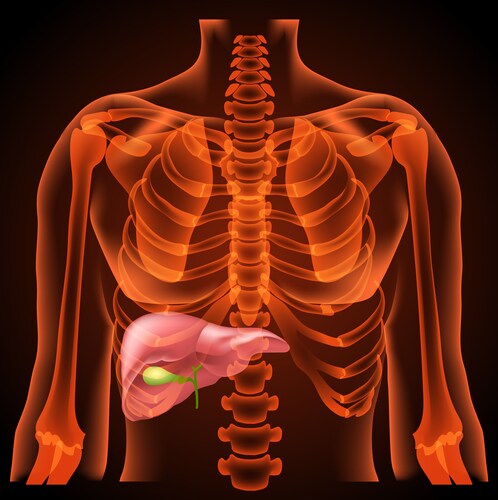 Bile acids are a focus of research because of the important roles they play in cholesterol homeostasis and lipid absorption, and as ligands of nuclear receptors and as cancer promoters. However, bile acids are structurally similar, meaning that analysis requires a method that is highly sensitive and specific. Lee et al. (2016) describe a method using ultra-high-performance liquid chromatography–linear trap quadrupole orbitrap mass spectrometry (UHPLC-LTQ-orbitrap-MS) to profile the bile acid constituents that make up bile.1 In particular, they used this method to explore age-related bile composition alterations in rats to predict metabolism-related therapeutic markers for longevity.
Bile acids are a focus of research because of the important roles they play in cholesterol homeostasis and lipid absorption, and as ligands of nuclear receptors and as cancer promoters. However, bile acids are structurally similar, meaning that analysis requires a method that is highly sensitive and specific. Lee et al. (2016) describe a method using ultra-high-performance liquid chromatography–linear trap quadrupole orbitrap mass spectrometry (UHPLC-LTQ-orbitrap-MS) to profile the bile acid constituents that make up bile.1 In particular, they used this method to explore age-related bile composition alterations in rats to predict metabolism-related therapeutic markers for longevity.
Lee et al. collected bile samples from three groups of rats. They housed each group separately for six weeks, six months and 15 months before cannulating their bile ducts and collecting bile for two hours. The authors prepared bile samples by diluting them 25-fold and 500-fold with deionized water. They then spiked 100 μL of diluted bile with 10 μL of internal standards, vortexed the samples and loaded them onto solid-phase extraction cartridges. The authors reconstituted the residue with 100 μL of 50% methanol and vortexed for 30 seconds before transferring them to a vial and injecting 5 μL into the UHPLC-LTQ-orbitrap-MS system.
Using 100 μL of blank matrix spiked with calibration standard containing 19 targeted bile acids and 10 μL of internal standards, Lee et al. constructed a calibration curve with at least six calibration points based on the range of each bile acid. They achieved a range of extraction recovery for their analyses of 88.5–100.5%, except in the case of lithocholic acid (LCA) (64.3–82.8%) and its conjugates. Further, the within-day and between-day variations in accuracy were 96.3–111.6% and 93.4–105.4%, respectively. The variations in precision were 1.5–10.6% and 4.5–13.0%, respectively. Taurine-conjugated bile acids comprised more than 80% of the total bile acids pool.
Between age groups, the authors found that bile acid concentrations increased overall with age. However, they had different patterns of concentration changes over the three time points. Unconjugated bile acids were present in a very small amount except cholic acid (and they did not detect LCA), which significantly decreased with age. Also, secondary bile acids conjugated to glycine (glycodeoxycholic acid and glycolithocholic acid) clearly decreased with age while other glycine-conjugated bile acids showed negligible change. Conversely, taurine-conjugated primary bile acids increased with age, with taurocholic acid emerging as the most significantly increased. In addition to 19 targeted bile acids, Lee et al. detected 22 unknown bile acids in the MS scan.
The authors successfully used UHPLC-LTQ-orbitrap-MS to identify clinically important biomarkers of aging using quantitative analysis. They also suggest that the 22 unknown bile acids may have important functions and should be investigated in future studies. Furthermore, their method offers an opportunity to identify clinically significant bile acids in diseases such as gastrointestinal and liver disease, because bile acids and aging are both highly correlated with diseases in these organ systems.
Reference
1. Lee, G., et al. (2016) “Quantitative profiling of bile acids in rat bile using ultrahigh-performance liquid chromatography-orbitrap mass spectrometry: Alteration of the bile acid composition with raging,” Journal of Chromatography B, 1031 (pp. 37–49), doi: 10.1016/j.jchromb.2016.07.017.
Leave a Reply